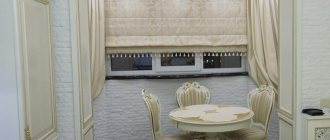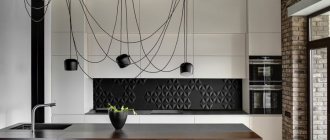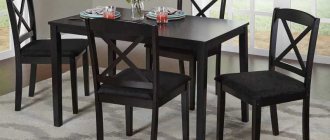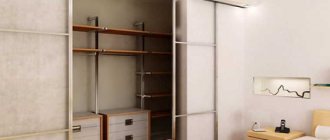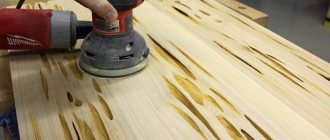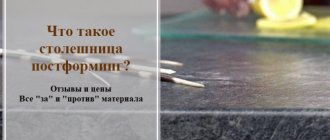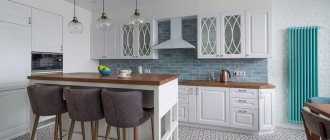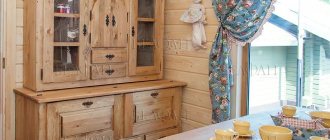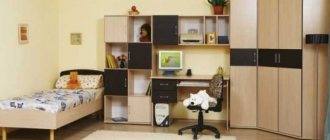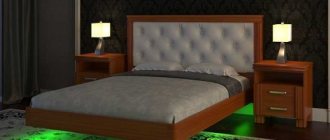- Contacts
- Price lists
- Order forms
- How to order
- Delivery
The DSP Komplekt company produces custom-painted furniture parts from MDF, laminated chipboard and glass. Such parts are used as kitchen fronts, furniture cabinet parts, cabinet fronts, sliding doors, and cabinets.
We paint (paint) our own materials and the customer’s materials. Color according to RAL, WCP, NCS, CS, Mobihel catalogues.
Prices
MDF painting
from 3190 rubles / sq. m. price excluding MDF cost
Painted MDF
from 4000 rubles / sq. m. price including MDF cost | Facade catalog
Detailed cost of painting MDF and painted facades in the Price lists section
Important: The price of painted MDF facades depends on the type of MDF being painted and the painting method.
Description of service
Painting MDF with enamel, varnishing, and applying patina is carried out in a special chamber with excess pressure, equipped with supply and exhaust ventilation, which supplies heated air through a filter system to the painting area. The spray booth allows you to minimize the number of dust particles on painted facades and improves the quality of painting MDF and other materials.
For painting we use paint and varnish materials from Mobihel, Renner, Novol and other companies, as well as 3M and Sunmight abrasives.
Facades with patina
This type of painting, due to the protrusion of one color from under another, imitates antique products - kitchen facades and cabinet parts.
Stages of manufacturing painted parts with a patina effect:
- Sanding the part;
- Applying 2 layers of primer;
- Soil grinding;
- Application of 2 layers of enamel of the main color;
- Applying a patination layer - either by partial painting or by removing the patina layer so that the patina remains in the recesses of the surface;
- Applying 2 layers of varnish, usually matte.
Manufacturing of kitchen fronts
The production of painted MDF facades also greatly affects their service life. MDF must be of high quality, maximum pressing. If you have finished furniture facades that you want to paint, then pay attention to the following points:
- quality of milling (façade relief). You should not see the beginning and end of the cutter exit; all bends should be smooth without chips or waves;
- facades must be free of dust, dirt, scuffs and other foreign particles before painting;
- the reverse side of the facade must be smooth, without deformation and without peeling;
- uniformity of grinding. The entire façade must be sanded equally, without transitions or whitish spots.
Our company offers services for the production of MDF kitchen facades not only painted, but also in PVC film.
Over the years, our company has established itself as a reliable and responsible contractor. We will produce furniture facades for you in the shortest possible time, and you will be pleasantly surprised by the quality.
For any questions you may have, you can contact us at Moscow, st. Dubninskaya, 79A building 2B Or call: +7(495)978-01-64 and.
Glass painting
Painted glass can be an alternative to Lakobel glass.
The main advantages of painted glass:
- Almost unlimited color range;
- There is no need to purchase a sheet of a strictly defined format, which allows you to save on leftovers;
- Reasonable cost.
Enamels can be applied both to high-quality M1 glass and to special coated glass, which has virtually no intrinsic tint, which is especially important when painting with white enamels; however, coated glass is more expensive.
Coatings with special effects “crakolet”, “foil”, “water drops”
The technology of applying original decorative effects, which are craquelure (craquelure effect), foil and the effect of wet drops. It is similar in that two layers of enamel are applied to the facades, the top of which is damaged in a special way.
Cracolet or craquelure (from the French craquelé - cracked), creates the effect of cracked paint on the surface of the workpiece.
Foil (from the English Foil - foil). Technology for obtaining the effect: stretch film is unevenly laid on the freshly applied top layer of enamel, and then removed.
Drops of water - the effect is obtained by spraying water onto the top layer of paint.
Color options
To simplify the designation of colors, several color standards or catalogs are used. The most common:
RAL (German: Reichsausschuß für Lieferbedingungen und Gütesicherung) - the standard was developed in Germany in 1927 and includes several collections: RAL Classic contains 217 of the most common colors, RAL Design - 1625 shades, RAL Effect - a catalog of matte colors and metallics, RAL Plastics - a catalog of 100 classic colors specifically for painting plastic and made on polypropylene foam plates for more accurate color rendering. RAL palette colors more details
WCP (WoodColorPlus) is a catalog of the famous Italian brand Sayerlack, owned by the world's largest concern for the production of paints and varnishes, The Sherwin-Williams Company.
NCS (English Natural Color System, natural color system) - the standard was developed in Sweden and has several versions: NCS Cascade 980 contains 980 colors, NCS Original - 1950 colors.
Mobihel is a trademark of the Slovenian company Helios, a manufacturer of paints and varnishes for car repairs, which, thanks to the widely available metallic colors, are widely used in painting furniture facades in a modern style. Mobihel has created a catalog specifically matched to the colors used in the car manufacturing process, which is why the names of car brands are often found in this catalogue.
Color Sistem or CS is a catalog of the Italian company Renner Italia SpA, one of the leaders in the production of furniture varnishes and paints and varnishes for exterior finishing. There are other standards, for example SSG, BS and catalogs (collections) of large paint manufacturers, for example Tikkurila Symphony, but they are used extremely rarely when painting furniture facades.
Also important in the designation of paints is the degree of gloss - Gloss - which is measured in units from 0 to 100 units.
Gloss is the ability of a surface to reflect light. Absolutely glossy - 100 Gloss - the glass surface is considered.
| High gloss Gloss level 90% Gloss | Matte Gloss level 20% Gloss | Super matte Gloss level 5% Gloss |
Please note that the same paint can look different.
The shade depends on many factors: the degree of gloss of the paint, the type of material on which it is applied, air pressure in the spray gun, the quality of soil preparation, the distance and angle of application to the surface (especially for metallics) and others. Therefore, in cases where it is absolutely necessary to “get the color right”, for example when repairing a damaged facade, it is necessary to paint it – a test color.
Advantages of painted facades
- Today, the production of painted facades is classified as environmentally friendly. The manufacturing process uses paints that do not contain harmful components, so the operation of the new kitchen will not cause harm to human health.
- Mixing different shades helps create the most unusual colors. The collection of factory catalogs presents a full palette of shades, but if desired, it is possible to create unusual options that bring interesting design ideas to life.
- The painted panel can easily withstand high temperatures and is not afraid of moisture. Over time, lamination and plastic begin to swell and peel off in “dangerous areas” (near the stove or sink). The paint penetrates deeply into the structure of the slab and reliably protects it from external negative factors.
- The film is easily scratched; the manufacture of painted facades involves applying a final varnish coating. It resists minor mechanical impacts, so this type of headset is difficult to damage.
- You can paint any furniture facade (straight, radius, concave).
- The method of painting MDF facades allows you to restore an old set of furniture. Modern workshops have learned to remove the film coating, prepare the base and repaint furniture, as well as give it gloss. But only if MDF boards were used for the manufacture of facades.
Read also: Kitchens with plastic facades
Photos of painted MDF facades
Environmentally friendly painted MDF facades
The environmental friendliness of painted MDF facades primarily depends on “drying” - polymerization of enamels and varnishes. There are nuances here that are important to know in order to be able to distinguish quality work from defects.
If the polymerization process is complete, and this takes from several hours to several days depending on the base, then there will be no odor coming from the facades.
The division of paints into furniture and automobile paints is quite arbitrary. As a rule, high-quality car enamels and varnishes have an acrylic base.
The polymerization period of acrylic is longer than that of polyurethane or polyester, but acrylic is more elastic, resistant to solar radiation, retains color, etc., which allows you to protect the car from exposure to aggressive environments.
For the same reasons, a significant part of furniture enamels and varnishes are based on acrylic.
The main condition for the environmental friendliness of painted facades is adherence to painting technology.
Paint application technology
The durability of the coating depends on proper application of the paint. First of all, it is necessary to prepare the space for the work. Painting furniture facades must be done in a large, well-ventilated room. The air temperature is maintained at least 20 degrees Celsius.
Surface preparation
When the room for painting has been selected and you have all the necessary tools, you can proceed to the first stage. First you need to disassemble the furniture and remove all fittings from the facades. The old layer of paintwork is removed from the slab. At this stage, it is convenient to use a hair dryer; it allows you to complete this work in less time. The heated paint coating begins to peel off and is easy to remove.
You can use special solvents to remove paint, but such compositions have an unpleasant, corrosive odor, which makes it impossible to use in enclosed spaces. Another alternative to a hair dryer is coarse sandpaper. Manual paint removal is very time-consuming. When using sandpaper, a large amount of dust appears and will need to be removed periodically with a vacuum cleaner. There is a possibility of damage to the facade itself, so sandpaper is best used in extreme cases.
It is not always necessary to completely remove a layer of old coating. Applying paint to a varnished surface is ineffective due to low adhesion. Processing the part with sandpaper will help improve it. After processing, you can begin degreasing and painting. It is worth remembering that MDF panels are very often covered with polyvinyl chloride film; it must be completely removed and only then proceed to the next stages of work. The surface under the film is treated with sandpaper.
Surface defects are visible under the coating layer. You can deal with cracks, chips and dents using wood putty.
- Gypsum putty is an environmentally friendly option with low cost and good performance properties, excellent for indoor work, as it does not have a strong odor;
- Latex or acrylic compounds have greater durability, but their cost is significantly higher. The composition is applied in a thin layer (1-2 mm) to avoid cracking after hardening.
The putty of the base layer may not match the color of the element being processed, but it should not stand out too much on the surface. The base coat must have good adhesion for better adhesion to the paint.
Removing a layer of old paint
Degreasing coating
Apply putty to cracks
Grinding
To obtain a smooth surface after painting, you need to think about sanding it at the very beginning. After applying and completely drying the putty, you need to arm yourself with coarse sandpaper and clean the surface. The grain size of the abrasive material used is gradually reduced to bring the surface to a perfectly smooth state. You should not get carried away with the process and use the smallest types; it is quite enough to treat the wood boards with paper marked P400 and P600.
Painting
Painting includes several stages:
- Degreasing – first, the sanded surface is treated with a degreaser. To do this, wipe the panels with a swab soaked in the composition. After work, the surface must dry. Do not touch degreased wood. This stage is necessary for good adhesion of the wooden panel and the applied paint. The degreaser dries very quickly, so a few minutes after its application you can proceed to the next step;
- Primer - this must be a special composition for use on wooden surfaces. For uniform application of the primer, each subsequent layer must be perpendicular to the previous one. Do-it-yourself priming of facades is done using a roller or brush. The primed part must dry, this will take about a day;
- The next step is painting. The technology for its implementation may differ, depending on the materials, initial and desired color of the furniture facades. In any case, painting should begin from the ends of the workpiece and only after that begin processing the front side.
Before applying paint with a spray gun, you can practice on a blank or an unnecessary piece of wood. This will help you choose the optimal spray width; it should be small. Depending on the color of the workpiece and the paint, it is necessary to apply several layers, three is usually enough, but if the parts painted with color have unevenly worked parts, then it may be necessary to apply the coating several more times.
After each layer, leave part of the facade for 10-15 minutes and allow the paint to dry a little. Light-colored parts can be painted using a tint varnish; when several layers are applied, the part acquires the required shade. It should be remembered that light paint applied to dark wood completely covers the structure of the material.
Degreasing coating
Cover with primer
Painting the surface
Applying varnish
It is not enough to paint the facade correctly; it is necessary to protect the new coating from accidental damage, exposure to direct sunlight, and moisture. To do this, it is recommended to apply a layer of varnish.
- First you need to decide on the type of varnish. Nitrovarnish is great for outdoor work, protects wood from environmental influences, it is very toxic and is not intended for indoor use. Water-based varnish is an environmentally friendly composition used indoors. You will have to wait about two weeks for complete drying;
- Next, you can begin preparing the room. Varnishes take a long time to dry and during this time there should be a minimum amount of dust around the piece of furniture. To do this, before starting work, you should carry out wet cleaning and lay a protective film on the floor to prevent accidental contact with varnish. The air temperature during operation should be +20 degrees. Even when using odorless materials, care must be taken to ensure good ventilation;
- Before applying varnish, the surface must be cleaned of dirt and treated with fine-grained sandpaper. Movements should be directed along the grain of the wood. You can clean the product from dust using a vacuum cleaner. Do not use a damp cloth;
- The surface is again coated with a primer and wait until it dries completely;
- Applying varnish. The choice of tool depends on the type of material. The brush is used when working with oil varnishes. For uniform application, it is recommended to choose tools with natural bristles, split at the ends. A swab is required for alcohol-based polish. It can be made from a small piece of wool wrapped in linen. The instrument is completely dipped in varnish and impregnated with it, then applied with quick movements along the fibers. Spray to speed up the application process. It can only be used in rooms with excellent ventilation.
Choosing furniture varnish
We carry out wet cleaning
We process facades with sandpaper
Prime the surface
Varnish
Finishing and decoration
After the varnish has dried, it is necessary to polish the surface. First, rough defects are removed with fine sandpaper, and only after that they begin polishing with special compounds and flax swabs. To obtain a good result, the polishing mixture is applied with quick movements in three layers with an interval of 12 hours.
After finishing the work, you can assemble the furniture. The holes for fastening the fittings will most likely have to be drilled again, because the old ones will be primed, covered with paint and varnish. All parts must be installed in their original places.
We remove rough defects with sandpaper
Polishing the surface
Price
| plain | special effects | |||||
| RAL, CS matt | RAL, CS, Mobihel with glossy varnish | metallic MOBIHEL with gloss varnish | RAL, NCS with patina and matt varnish | RAL, NCS varnished with metallic powder, pearlescent | ||
| The cost of painting the Client’s Material, Paint and varnish materials are ours | 3190 | 4090 | 4390 | 5390 | 5560 | |
| Painted MDF 16mm, solid smooth rub/sq.m. | 4000 | 4900 | 5200 | 6200 | 6400 | |
| Painted MDF 16mm, with glass milling without a quarter of a ruble/sq.m. | 4150 | 5050 | 5350 | 6350 | 6500 | |
| Painted MDF 16mm with glass milling with a quarter of a ruble/sq.m. | 4300 | 5200 | 5500 | 6500 | 6700 | |
| MDF 16mm, bent blind R300 mm rub/m. linear | 3700 | 4600 | 4900 | 5900 | 6100 | |
| MDF 16mm, bent under glass R300 mm rub/m. linear | 4000 | 4900 | 5200 | 6200 | 6400 | |
| Milled facades from (the cost depends on the type of milling) | 5000 | 5900 | 6200 | 7200 | 7400 | |
| Application of additional matte varnish - 1200 RUR/sq.m. | |||||
| Application of additional glossy varnish with polishing - 2200 RUR/sq.m. | |||||
| MDF thickness 19 mm +100 RUR/sq.m. | |||||
| By default, on facades without milling, the edge radius of the front side is 2mm | |||||
| Painting with transition + 1500rub/sq.m. | |||||
| Painting of parts larger than 1 square meter. +20% | |||||
| The cost of orders with an area of less than 1 sq. m. are calculated at the price of 1 sq.m. | |||||
| For parts of non-standard sizes - with a side of less than 150 mm, curved, etc. Surcharge may apply!!! |
Laminated chipboard cutting, sawing laminated chipboard - features
Important!
We are obliged to inform you about some of the nuances of working with the color catalogs “RAL”, “NCS”, Color System, WOODCOLOR and others.
Often, clients who order a color from these catalogs consider the selected color to be a standard, but this is not entirely true. The paints used to paint the colors in the catalogs are typographic paints and not original enamels for furniture production. Also, the color rendition of the paper medium and the paint itself is different.
The purpose of catalogs is to help the client visually choose a color.
Colors from catalogs can be made from base materials with varying degrees of gloss: from 5 to almost 100%.
When producing enamel colors from catalogs with different degrees of gloss, different pigment mixing recipes are used. The gloss of the enamel affects the color match to the catalogue.
Please note that:
- 1. Catalogs in printed (typographical) form are used for visual selection of the desired color.
- 2. The color standard is the real, live color of a specific enamel on a specific production and material.
- 3. When choosing a color, you need to focus on the degree of gloss of the finishing surface.
Design Features
Let's return to the main difference between a matte kitchen: light absorption. This nuance is especially important to take into account in a small kitchen: if matte facades for the kitchen are a matter of principle, choose the lightest possible palette, preferably in the same tone as the background - wall decoration. This design technique allows you to “dissolve” furniture of any size in the room.
Advice! In small spaces, give preference to a straight set up to the ceiling instead of a corner one. They have approximately the same capacity, but the first one will help save a lot of space.
For rooms with high (more than 3 meters) ceilings, it is also better to order built-in models up to the ceiling. The more vertical space is occupied, the more lived-in the space seems.
As for the appearance of the facades, there are several options:
- Straight and smooth. A classic of the genre, suitable for kitchens in minimalist, loft, scandi, and modern styles. Looks modern and simplifies maintenance.
- Milled. Typically used in classic or Scandinavian design. When ordering, remember: the more complex the pattern, the harder it will be to care for the matte kitchen.
- With glass. Individual upper cabinets can be decorated with glass inserts. It is advisable to choose frosted glass as well.
After choosing the color and type of facades, do not forget about the countertop. Wood is considered a classic; it is advisable to choose natural boards coated with oil or wax. A matte countertop that matches the color will look great (if the furniture is two-tone, make the lid match the color of the top drawers). An equally impressive option: a glossy countertop in color. Black gloss in combination with black matte, for example, looks very catchy.
Lighting requires special attention: since the surface, especially dark ones, absorbs light, there must be a lot of it. Ceiling lamps above the work surface, an LED strip above the apron, additional sconces or a central chandelier - all this will help create the effect of a bright, uncluttered room.
The photo shows gray facades with milling
Another point to consider: the material of the facades. The appearance, durability and ease of care of a matte kitchen depend on this.
- Chipboard. The lowest price. But they are afraid of water and are easily damaged during use.
- MDF. Middle price segment. The option when it’s really worth paying extra: MDF will last for many years, will delight you with easy care and a spectacular appearance.
- Tree. Expensive option. Wood is durable, but to achieve a matte surface it is coated with paint - therefore, in this case, overpaying is not justified.
The photo shows doors without handles with a glossy finish
